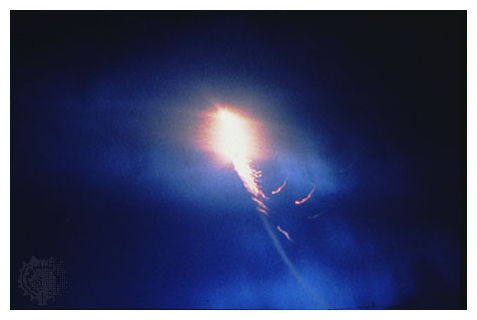
During a severe thunderstorm, they witnessed the emergence of a giant fireball, about five meters in diameter, and managed to measure the chemical composition of its basic elements with a spectrometer. Chinese scientists were able to investigate the chemical makeup of the main elements of ball lightning.
According to "Rossiyskaya Gazeta" such substances as silicon, iron and calcium are common in soil. On this basis, the Chinese physicists said that they were able to confirm the hypothesis of the New Zealand scientist John Abrahamson, who suggested that when lightning strikes the ground the sudden rise in temperature makes the soil eliminate oxides of silicon, iron and other elements.
A shock wave throws resulting gas into the air, forming a ball. According to Chinese physicists, the mystery ball of lightning has been uncovered. Another interesting fact was found as well. The fluctuations of ball lightning are about 100 hertz, though they are supposed to be half as less. It is possible that an extra 50 hertz could have been added by those located nearby power lines.
One of the leading Russian experts in studying the phenomenon of ball lightning, Doctor of Physics and Mathematics of Moscow State University, Vladimir Bychkov is convinced that Chinese scientists have not received conclusive evidence about the origin of ball lightning striking in normal soil. Bychkov is not alone in his doubts. Thus, the world's authoritative scientific journal Nature refused to publish an article by the Chinese scholars, it came out in a less prestigious publication.
According to Professor Bychkov, the situation with ball lightning has remained virtually unchanged for many years. Today there are hundreds of theories that explain its origin. Many famous scientists offered their version, in particular, the Nobel Prize winner Pyotr Kapitsa. However, so far no theory has become increasingly accepted.



to show how the ball remains coherent. Witness accounts say it 'floats' and 'passes through walls' so that would mean it acquires a composition that holds it together----perhaps a quantum pressure? Recall how early experiments showed how super chilled gas crept out of a thermos.
Suspect that this pressure/cold condition may be a 'cold and thin equals hot and dense' phenomena.